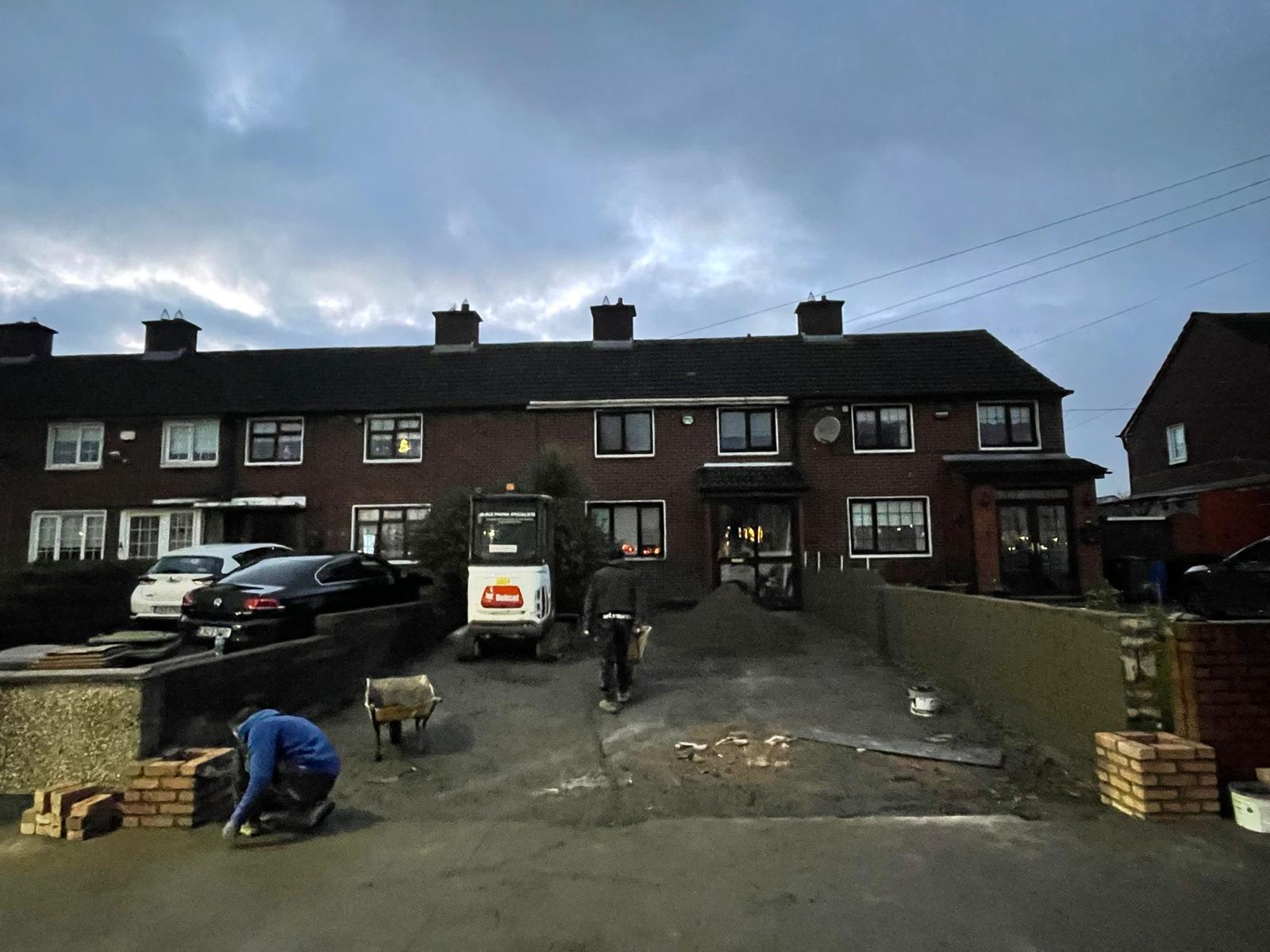Paving Installation Process
Installing block paving to a high standard is vital to its longevity, from the base preparation to the final concreting.

Here at NaturalScape Paving, our contractors are trained to install block paving to the highest of standards. The following is an outline of the basic steps we carry out before / during and after our installation.
Excavation
Before you can install block paving, you need to ensure sufficient depth for the paving, its sand-laying base, and the base foundation underneath. We first use a CAT scanner on residential driveways to detect pipework and electrical work. Once we have assessed and marked these areas, we begin excavation.
Our team excavates by machine and removes it by loader, which means you will never have a mess or heap of rubble lying around. As we excavate, we remove it at once.
Base Preparation
Once excavation is complete, we will install any membranes, piping, drainage, edging, and manhole covers. Once these have been set into place, we will install our new base foundation. This will be set to the required levels and compacted with a heavy-duty whacker plate to lock it in place.
Surface Installation
We will lay our sand or paving grit (depends if its permeable paving or standard) on the base foundation at this stage. This will be screeded using conduit piping set to accurate levels to direct the surface water runoff. Once the sand is laid, our paving is laid on top.
We will always border off the areas separately and lay the paving in whichever pattern you want. However, for standard paving, we will always recommend herringbone, as it helps lock the paving in place, which is very important in areas with vehicle traffic, such as a driveway.
Any open edges of block paving are cut into the border we have run around the area, and the entire area will have kiln-dried sand / silver sand applied on top of it.
Retaining
It should be run tight into a wall or an edging kerb to retain the paving. If there is no edge to run it into, the outside line of the paving should be set in concrete. Without adequate retention, the paving will eventually push apart.
Compaction
At this final stage, the kiln-dried sand is swept off and the paving is machine-compacted. We compact first in one direction, and then we compact a 2nd time in the opposite direction, for example, side to side first and then the 2nd compaction would be top to bottom.
This helps to not only level off the paving but will help drive the sand into the joints, which, due to the spacers on the paving, will allow the sand to drop in and lock the paving in place.
Once compaction is finished, we will top up the joints on the paving with more kiln-dried sand and clean off the area to complete the work.
If you would like to know more, or would like a free estimate for block paving in Leinster, call our pavers on (01) 5768874, we would love to provide you with a 100% Free estimate.
